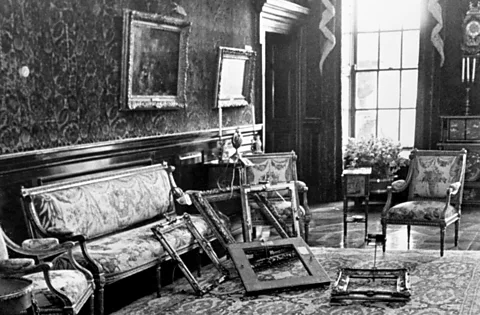Like the guard injured during the Worcester Art Museum robbery, security employees rarely carried arms – and, as portrayed mockingly in The Mastermind, they could often be dozy “retirees” or “acid heads”, as Reichardt says, with limited training. She adds: “Museums used to have these cool circular drives out front, which made the getaway pretty handy.” And, while the film features an FBI art crime investigator reminiscent of real-life agent Robert Wittman – who recovered $300m (£225m) worth of art over the course of his career – the actual FBI Art Crime Team was only founded in 2004.
 Alamy
AlamyBut as Flynn notes, while museums may have been slow to appreciate the threat of robbery in the past, the robbers have not generally displayed the sharpest acumen either. “The history of art crime and major art heists has been one of opportunist idiots who don’t really understand the nature of works of art themselves,” he says, referring to their potential for damage, “or indeed the market for works of art. [Then] these guys suddenly discover, to their horror, that the objects they’ve stolen are very difficult things to shift.”
The allure of the art robber
An archetype in fiction of the art robber as lovable rogue also started to emerge during the 1960s and ’70s. Amid unrest driven by the Vietnam War and the Nixon administration, disillusionment and discontent reached high levels, especially among younger generations in the US. Simultaneously, films such as 1964’s Topkapi (where a band of art thieves attempt to steal from a palace in Istanbul), 1966’s How to Steal a Million (where Audrey Hepburn and Peter O’Toole plan a heist to altruistic ends) and the same year’s Gambit (starring Michael Caine as a plucky cat burglar stealing an antique bust) helped to glamorise such characters.
According to historical author Susan Ronald, who specialises in art crime, the rise of the art robber in pop culture reflects the time’s anti-authority mentality. “Part of [the appeal of these characters] is [their] outsmarting the establishment,” she explains. “The fact that art heists usually don’t involve private individuals makes it more acceptable. It’s an institution, and there’s something quite daring about it.”









Recent Comments